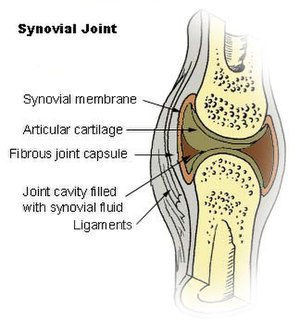Exercises for stiff and achey shoulder joints

Dansk: Skulderled. Français : A. B. Acromion C. D. E. Tendon du biceps F. G. H. Processus coracoïde I. J. Clavicule K. Humérus. A = , B = Acromion, C , D , E = Tendon du biceps , F = , G = , H = Processus coracoïde , I = , J = Clavicule, K = Humérus (Photo credit: Wikipedia)
The shoulder is a complex body system tasked with moving the arms. It is comprised of the shoulder blade (scapula), collar bone (clavicle), humeral head (nearest end of the upper arm bone) and the breast bone (sternum), and associated muscles, ligaments and tendons that hold it together and move it.
When a patient complains of shoulder pain, it could mean pain in any of these areas. The doctor has to ask the patient to point to the precise area of pain, and ask the patient to move the arm and shoulder to get a better idea of what is causing the pain.
Today we’ll talk about general ache in the glenohumeral joint, comprised of the humeral head and glenoid fossa of the scapula (the shallow cup-shaped surface of the scapula).
First of all, realize that the glenohumeral joint has the widest range of motion of all the joints in the body. You can do all sorts of movements with your shoulder joint– raise your arm from the side, the front, the back; transcribe small and large circles, hug yourself, spread your arms far apart; throw a football, and throw an underhand pitch– that’s a lot of movement, compared to, say, the knee. In order to accomplish such a wide range of motion, there has to be a lot of moving parts (ligament and tendon attachments). When you have a lot of moving parts, there is a greater chance of something breaking down. And this is why shoulder problems are quite common in people.
A general ache in the glenohumeral joint can be the result of sleeping on your shoulder; an old injury, or simply over-using it. Tendons that slide over bony surfaces to move the shoulder joint in its many directions may be pinched in the narrow confines of the glenohumeral joint. It makes the shoulder feel stiff and achey.
NOTE: feeling a very deep and sharp, focal pain in the glenohumeral joint that is worse with a particular angle of arm movement is a different presentation and is not what we’re addressing here.
This is about general achiness and stiffness that does not cause any weakness or disability of the shoulder. If you have more of a sharp pain that doesn’t go away with rest or medications, refrain from doing the following exercise until you see a doctor who can properly diagnose your problem.
TREATMENT:
You will be doing gentle stretches to get the shoulder joint moving, eventually without the achey and stiff feeling.
First, let’s assume it’s your right shoulder that has the problem. Stand with your left foot about a foot forward of your right foot. Bend at the waist but keep your lower back straight, and rest your left hand on your left knee.
Let your right arm hang limp straight down. Sway your body in circles to get your limp right arm to transcribe a clockwise circle shape. Try not to use your right shoulder muscles themselves, let the rocking movement move the shoulder. Do ten circles, then reverse directions. Do 5-6 times a day. If you do it correctly, the mere weight of your right arm will traction the glenohumeral joint (slightly pull apart the surfaces) and the rotation movement will stretch the ligaments in all directions.
Try adding a small weight, in increments throughout the week (do not exceed ten pounds max) to increase the amount of traction. You should feel a gradual loosening of the shoulder joint, and less pain. Avoid sleeping on the affected shoulder for a few weeks.
The other exercise is more challenging, so only do it if the pain has gone down considerably. Take a bath towel and roll it length wise. Grab one end with your right hand, and raise that hand (90 degree elbow bend, upper arm at level of shoulder). Reach behind you with your left arm and grab the other end of the towel with your left hand. Now, extend your right elbow back and forth as though you are drying your back with the towel. Do for about a minute, and then switch hands. Repeat.
As always, if any of these exercises cause an increase in pain, stop immediately.









